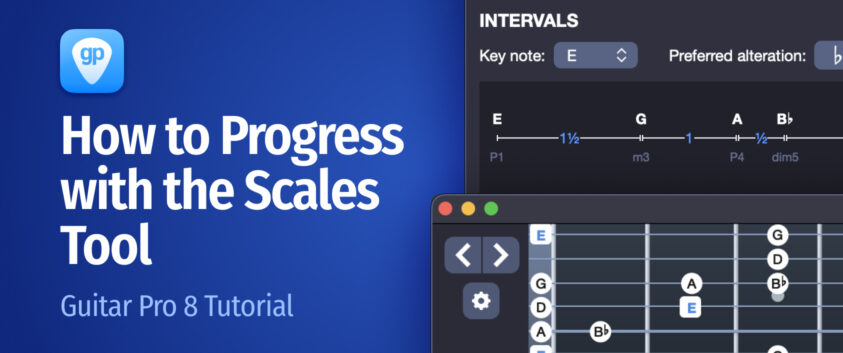
Level up your playing with the Guitar Pro Scales Tool
- How to access the scales tool in Guitar Pro 8?
- Tip 1: optimize your scales practice
- Tip 2: make your editing process easier
- Tip 3: practice scales with backing tracks
- Tip 4: train your ears
- Tip 5: warm-up your fingers
- Tip 6: practice rhythms
- Tip 7: switch positions
- Tip 8: explore exotic scales
- Tip 9: analyze famous solos
- Tip 10: set achievable goals
- lets-rock.gp
Hi everyone, I’m Thomas from Guitar Pro. I’m excited to share some Guitar Pro tips with you. I’ll be showing you how to make the most of the scales tool in Guitar Pro 8 to help you enhance your guitar skills.
The first part of the question to ask is: why should you bother learning scales?
Scales provide a framework for improvising melodies, solos, and fills, helping you create more coherent and expressive music.
Learning scales teaches you the layout of notes across the guitar neck, improving navigation and fluency. And practising scales improves finger strength, speed, and coordination, making complex guitar techniques easier to master.
This powerful and underestimated Guitar Pro Scale Tool allows you to:
– visualize the notes of a large selection of scales on the Fretboard View
– visualize the intervals of the scales
– find scales from a selection to help you compose
– discover new scales
– practice them in different keys and positions.
We have prepared a Guitar Pro tab for you for your practice sessions. Download the Guitar Pro tab here. It contains the audio file of a backing track! Download the free Guitar Pro demo here.
Let’s dive in!
How to access the scales tool in Guitar Pro 8?
Open a new project or a Guitar Pro file then go to:
Guitar Pro 8 > Tools > Scales.
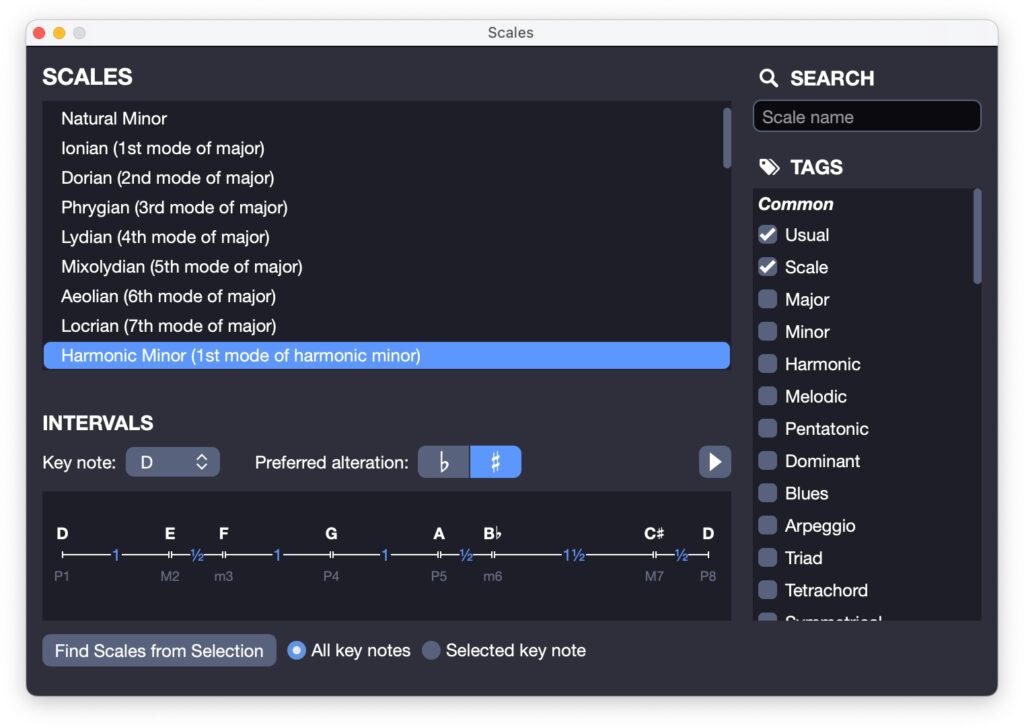
Tip 1: optimize your scales practice
Here is an example of how you can use the Scales Tool during your practice time:
1 – Open a tab, and select a few bars.
2 – Open the Scales Tool.
3 – Click on “Find Scales from Selection“. The Scales Tool will propose a selection of scales you can play when accompanied by the song! On the right side of the window, you’ll even see the accuracy rate of the scales proposed. Select the one you like.
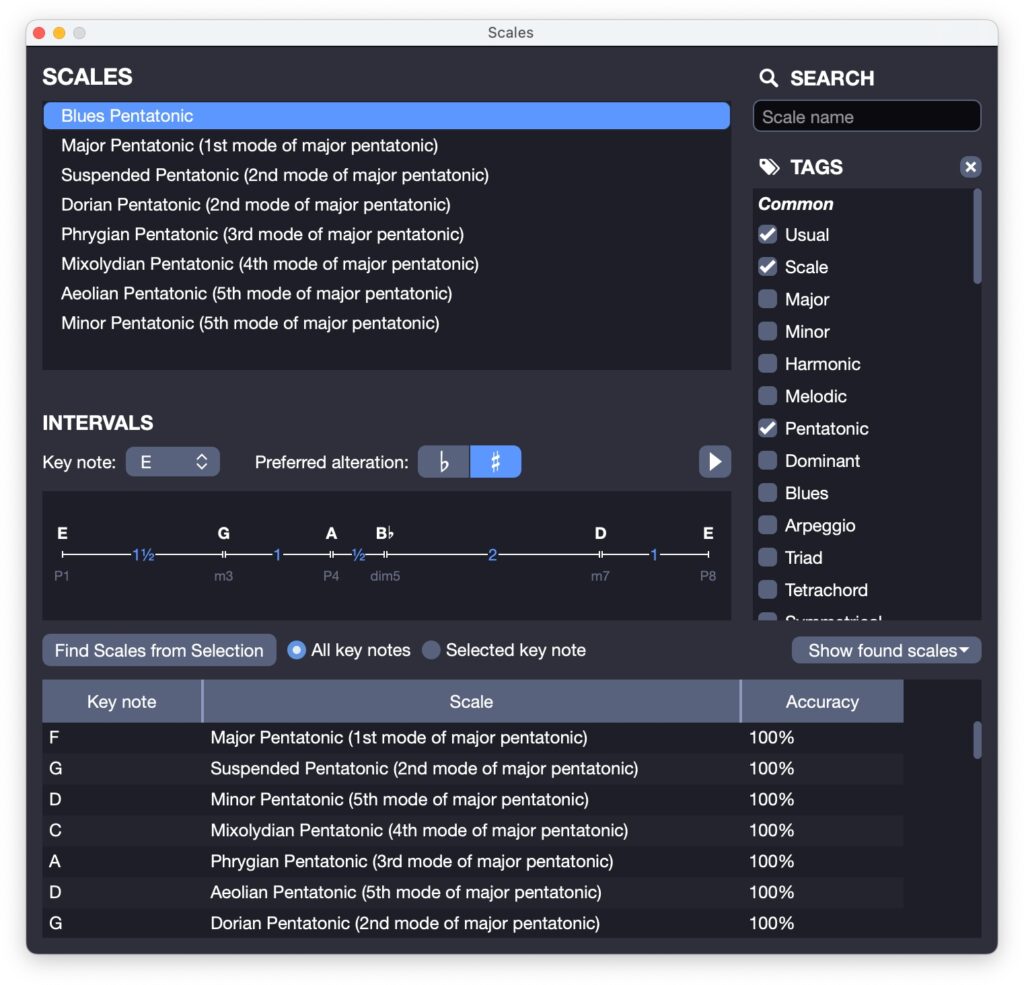
4 – Open the Fretboard View if not opened to visualise the placement of the notes.

5 – Enable the loop, select a few bars and play the song.
6 – When practising, choose a position on the neck, and I suggest you start playing with the root note. The root note can be highlighted on the Fretboard View. And of course, all the notes that appear on the fretboard are the notes you can play as they belong to the scale you selected.
To highlight the root note:
Fretboard View > OPTIONS > Highlight root note: On.
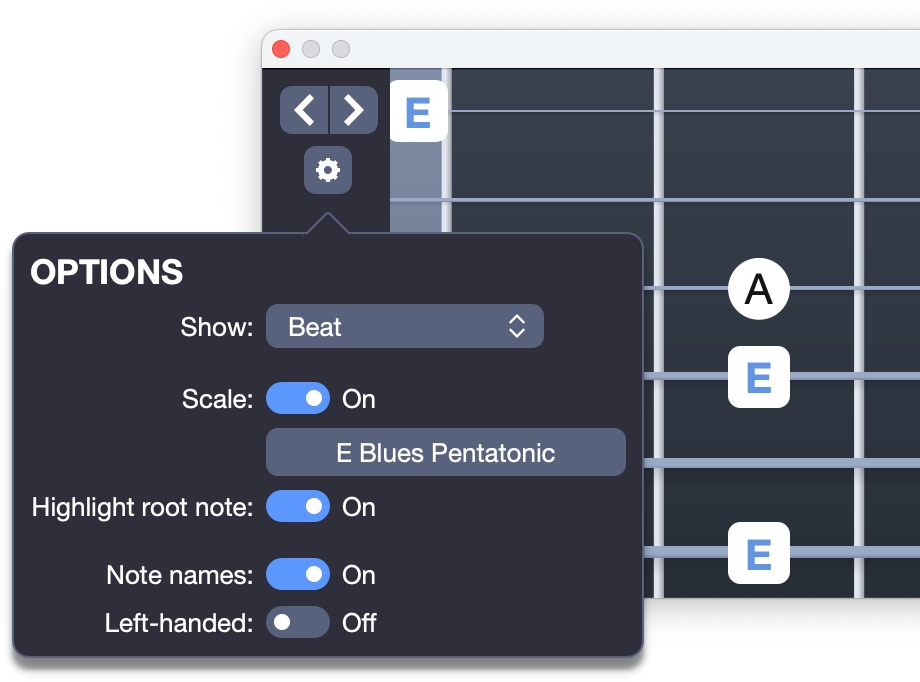
Tip 2: make your editing process easier
Using the scale tool to help you write songs is easy.
1 – Open the Scales Tool then select several bars of your composition.
If you’re starting from scratch, open the Scales Tool, select a key and then select the scale you’d like to use.
2 – Use the Fretboard View to enter notes in your composition. All the notes of the scales you selected will appear on the Fretboard View, click on them to add them to your score.
The Fretboard View icon is at the top right of the main Guitar Pro window.
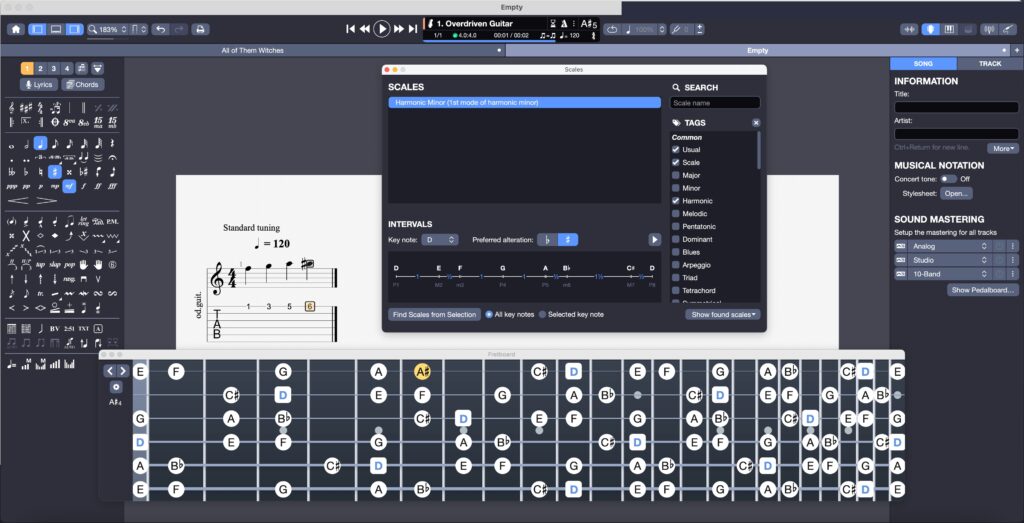
NEW! Did you know?
You can now edit and add scale diagrams to your scores.
Note > Scale Diagram…

Tip 3: practice scales with backing tracks
With Guitar Pro 8, you can add an audio file to your score. You can then add a metronome, slow down the tempo, add a loop and play along with the backing track. These are great conditions for practising your scales!
Tip 4: train your ears
Use scale patterns for ear training: improve your ear by reproducing scales by ear and recognizing intervals within the scales.
You can also preview the sound of the scales by clicking on the little play button in the Scale Tool window.
Tip 5: warm-up your fingers
Incorporate scales into your warm-up routine: make scale practice a regular part of your warm-up to build dexterity and muscle memory.
Tip 6: practice rhythms
Experiment with different rhythms and articulations: practice scales with varied rhythms and articulations to apply scales creatively in solos.
Tip 7: switch positions
Master the fretboard with position shifts: practice shifting between scale positions across the fretboard to improve navigation and versatility.
Tip 8: explore exotic scales
Experiment with less common scales: jump into exotic scales like the Phrygian Dominant or the Spanish Mode. These scales offer unique tonalities that can inspire new ideas and expand your musical vocabulary.
Tip 9: analyze famous solos
Dissect iconic guitar solos: use the Scales Tool to analyze famous guitar solos. Identify the scales used and practice the scales in similar musical contexts to better understand their application.
Tip 10: set achievable goals
Set progressive challenges: gradually increase practice speed and incorporate different scales to expand your musical vocabulary. You can use the progressive speed feature to increase or decrease the tempo.

We hope you like these tips, share your suggestions and questions with us in the comments below. You’ll find plenty of Guitar Pro files with audio tracks to download for free on our blog.
Have fun and scale up!
Leave a comment
Your email address will not be published.



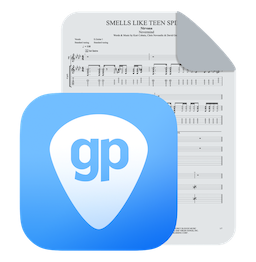
10 Comments
Hi, is there a way to adjust the font size and font typeface in the scale diagram feature? You have the option to choose color but no other options. I have the grid-spacing maxed out at 6.00 but the letter names for the note positions are still too small to read. This would be very helpful! Thanks,
Hi David,
I regret it is not possible to this day but we added it to our wishlist for future improvements.
Hi! Is there a good way to notate scale degree using this app? I am working on making diagrams focusing on scale degree rather than finger/fret (to make skeleton versions of tunes easily transposable).
Thanks!
Rochelle
Hi Rochelle,
You can create Scale diagrams from the Note menu (Shift + S keyboard shortcut) and indicate the information inside the dot.
Feel free to contact our Support if necessary: https://support.guitar-pro.com/hc/en-us/requests/new
can scale tab / fretboard view, be printed?
There is not any print feature for these windows, but we invite you to do a screen capture eventually.
Feel free to contact our Support using this form for any help request:
https://support.guitar-pro.com/hc/en-us/requests/new
Very clear and helpful, you have inspired me to take the next step (in my old age) on my guitar journey.
thank you
Thank you very much Michael, we appreciate it!
Hi. Can I buy and down load app guitard pro 8 in one mobile samsumg of 128 gb?. If not which one is the most appropriate for a mobile phone?
Hi Jojo,
You won’t be able to install Guitar Pro 8 on your Android device I’m afraid.
However we did develop a mobile application for Android, but please note it is a totally different application:
https://www.guitar-pro.com/c/15-guitar-pro-ios-android